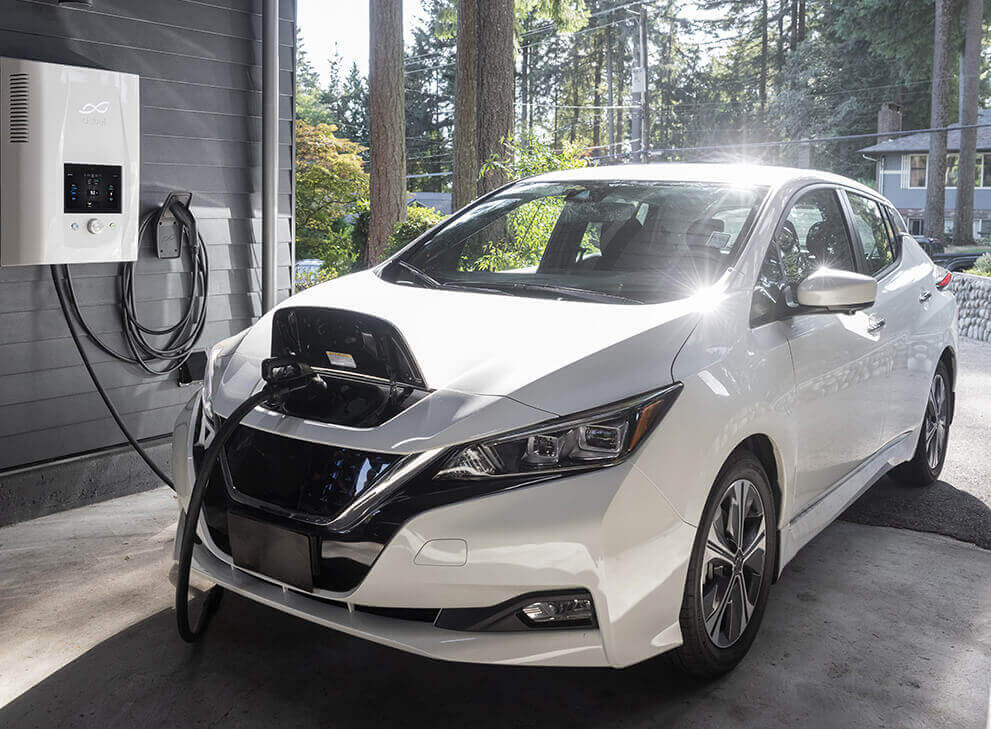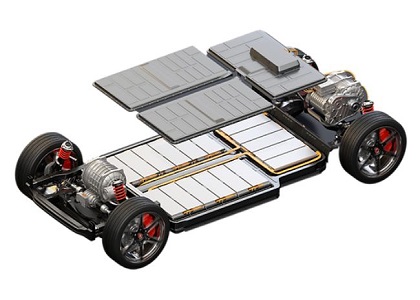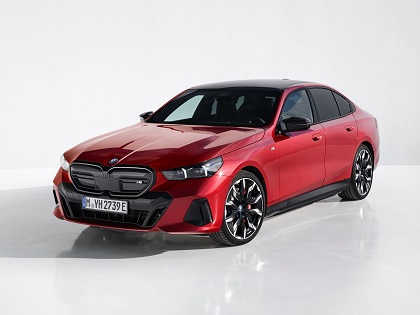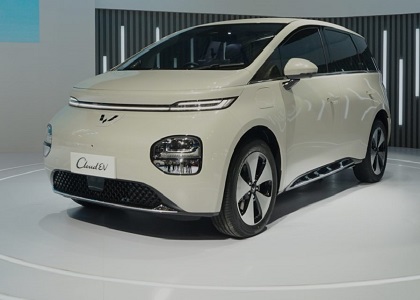
New EV Buying Guide
Not sure if an EV is right for you? This guide will help you determine and empower your decision-making process.
Embarking on the journey to embrace electric mobility marks a pivotal step toward a quiet, dynamic driving experience. Navigating the electric vehicle (EV) landscape requires a thoughtful approach, considering factors that range from your daily commuting distance to the varied charging options. With prices of EVs widening from their gasoline counterparts due to rising interest rates and inflation, it becomes important to ensure an electric vehicle is the right fit for your lifestyle and use cases. In this comprehensive EV buying guide, we'll break down the essentials into five key sections. First, we delve into the fundamental considerations of distance, running patterns, and budget. Next, we will explore the critical interplay between budget, a car's range, and its charging capabilities. From there, we'll seamlessly transition to the convenience of charging at home, followed by importance on battery care. Finally, we'll wrap up with a look at the importance of adaptability and a willingness to tweak driving habits for an optimal EV experience.
1. Knowing your Running, Use Cases, Travel Routes, and Budget
Knowing your total annual mileage is crucial to determine the minimum distance your EV must cover daily plus the occasional long-distance trips you take in a year. This helps to estimate the distance your EV will have to cover between charges. Occasional trips one takes will exceed your average daily commute, so it's essential to ensure your EV can handle these longer distances, providing assurance that your car will be able to cover those long hauls. Researching the routes and availability of electric chargers beforehand can alleviate range anxiety.
Understanding your average commute gives a rough approximation of charging intervals. For example, an average commute of 20 miles on the highway with 220 miles of real-world range means you'd charge your car approximately every 11 days. Prospective owners unsure about their average daily commute can record their daily travel for 2-3 months to gather data on average commutes and occasional distances, such as visiting friends and family or going on hiking excursions.
In addition to distance, consider how you'll use the car. For instance, carrying luggage and items frequently may require an SUV or MUV over a sedan for extra space. Conversely, if you'll mostly be ferrying 2-3 people and not large items, a sedan like the Tesla Model 3 might suffice. Identifying your usage helps select the right body type for your lifestyle and budget.
Budget is also a crucial factor, as EVs often command a premium over their gasoline counterparts, particularly SUVs. Knowing your usage and requirements will help determine if stretching for an SUV is justified or if a sedan is sufficient. If budget constraints prevent purchasing a new EV, consider a used EV that fits your wallet better.
2. EV’s Battery Capacity, Range, and Charging Capabilities
Having a better understanding of one’s usage and requirements will aid your decision-making process to narrow down your options optimally. For individuals who require more range can opt for long range versions which have bigger battery packs compared to their standard range variants (both measured in kilo Watt hours) which will offer more range for the same make and model. In addition, charging capabilities of an EV, across various chargers mainly a Level-2 wall box charger and Level-3 DC public fast charger, assures owners of spending less time plugged-in and more time on the road. Hence, it becomes crucial for individuals with longer commutes to consider an EV’s range plus its charging capabilities which can alleviate range anxiety and spend more time munching the miles.
Long range EVs tend to be more expensive than their standard range counterparts, and shelling out more on a long range EV compared to a standard range variant may not always be justified. For individuals who have short daily commutes and lower annual running, a standard range variant will be suffice based on one’s daily commute. Selecting a long range EV or a short range EV is contingent upon the distances the EVs will travel, an important point to note that the batteries has atleast 3 days of charge for daily commute while operating between 20-80% State of Charge. This will help to prolong the service life of the battery along with charging the battery pack to 100% when absolutely needed.
3. Being Able to Plug-in your EV at Home
Having a three-pin socket or wall box charger installed at your home will leverage greater control over charging. Although both the charging methods take longer to charge compared to DC-fast chargers, however a wall box charger will suffice for daily use. According to recent press release of J.D Power and Associates for their 2023 Electric Vehicle Consideration Study states that 85% of times owners in the US charge their electric vehicles at home. Tata Motors shared a similar number in India recently highlighting that EV owners charged their vehicles at home as high as 93% of the time. This statistic from Tata Motors becomes essential to highlight despite geographic locations as it shows even with a claimed range of 312 km (193.8 miles) for the Nexon Prime and 453km (281.48 miles) for the Nexon EV Max, still proves the fact that EVs with limited range and charging capabilities can still fit into their owner’s lifestyle and requirements.
Charging your EVs at home with an installed wall box charger or three-pin socket will leverage more control over charging, and limiting DC fast charging for situations when absolutely needed such as travelling across cities or getting to another charger just before running out of charge warrants the use of a DC fast charger and topping to 100% to slow down battery degradation. Lastly, the slower your EVs are charged and keeping it within a manufacturer recommended operating range stated in the owner’s manual are couple of practices that will help extend the service life of your batteries. The operating range varies across manufacturers, refer to the owner’s manual of the vehicle and adhere to the numbers recommended in the owner’s manual.
4. Caring for your Battery Pack
Batteries are the most expensive component of an EV accounting for 40-45% of the cost of the vehicle. Hence it becomes imperative to take care of your batteries through healthy charging habits and limiting exposure to extreme environments such as leaving out your EVs in extreme heat or cold for extended periods of time. For instance, avoid topping up batteries to 100% for daily use and limiting charging to 80% or manufacturer recommended limit stated in the owner’s manual will help to maximize your battery’s service life. In addition, frequent draining of your batteries down to 0% frequently is an unhealthy practice as it leads to faster capacity loss, accelerates the degradation of your battery pack which can reduce your batteries’ range, and in extreme cases cause internal short-circuiting leading to thermal runaway colloquially known as EV fires. According to NREL’s (National Renewable Energy Lab) report citing Hans Eric’s presentation at the 2021 NAATBatt Annual Meeting, batteries in electric vehicles can last 12-16 years dependent on how the battery pack is maintained. Following healthy charging habits, along with limiting exposure to extreme weather conditions will help to prolong your battery’s service life. Stay tuned for charging best practices which will be linked here soon.
5. Being Prepared to Adapt, and Willingness to Change your Driving Habits
Although electric vehicles and gasoline vehicles have an accelerator pedal, brake pedal, and a similar looking gear modes on the gear selector, however once these pedals are pressed, they achieve the functions of moving the vehicle differently. The answer lies in the difference in components which demand a change in how we use our vehicles. A gasoline vehicle is frequently emptied to the last gallon of fuel before refueling and filling up the tank once empty. People inherently assume applying the same pattern to electric vehicles which is where the concerns of range anxiety, the charging infrastructure, and charging duration stem. One needs to consider that electric vehicles are inherently different obviously and require some level of adaptation. For instance, keeping the battery operating percentage between an operating range of 20-80% State of Charge for daily usage, and charging to 100% only when travelling longer distances. This helps to extend the service life of your battery, and aids in reducing range anxiety. Currently most electric vehicles require some level of planning especially when travelling long distances except for Tesla which has an excellent route planner that optimizes your route with charging stations to charge your batteries. However one can still own an electric vehicle and drive it long distances with some level of planning to find charging stations to top up and rest depending on your geographic location. Yes, it is possible to go electric with a slight change to our driving habits.
Have questions or want to share your EV experiences? Email us with your questions, or EV stories at [email protected]. We love hearing from our readers and would love to help!






January 03, 2024
Category: